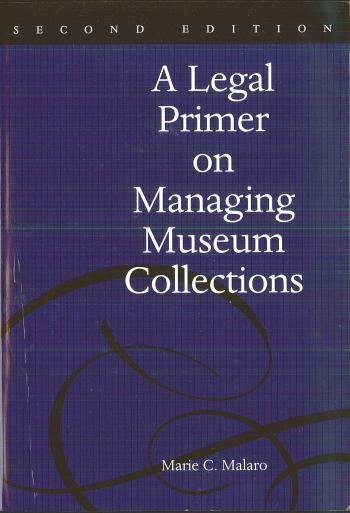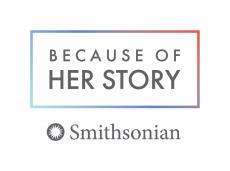
In 2006, at the 100th anniversary of the American Alliance of Museums, one hundred museum professionals were selected to be Centennial Honorees because of their significant impact on American museums. Not surprisingly, the list included many museum curators and directors, but it also included a lawyer, Marie C. Malaro (1933-2018), who set high ethical and legal standards for the museum profession and influenced generations of museum employees across the globe. That same year, I had the privilege of conducting an oral history interview of Marie Malaro for the American Alliance of Museums/George Washington University/Smithsonian Institution Archives Oral History Project, created to celebrate this milestone anniversary of the AAM and the 30th anniversary of the GWU Museum Studies Program. Malaro entered the legal profession in an era when most women left such issues to the men. She became associate general counsel at the Smithsonian, studied and codified the laws and ethical standards that apply to museums, taught ALI-ABA seminars for decades, and directed the Museum Studies Program at George Washington University. Her legacy includes Smithsonian legal cases, several seminal works on museums and the law, and generations of students who were challenged to understand the legal ramifications, and accept the highest ethical standards for their work.
Malaro's entry into the legal profession has some great similarities to those of Ruth Bader Ginsburg, as portrayed in the documentary RBG. Born and raised outside of New Haven, Connecticut, Malaro graduated from Regis College in Boston in 1954, more than a decade before the women's movement. Although she'd never thought about pursuing law, she was encouraged by a professor to take the law school admission test, and was soon on her way to the Boston College Law School with a full scholarship. She had been trained by her parents to think through decisions and provide well-reasoned arguments for her position. By her second year, she was the first woman to serve on the Boston College Law Review, and she passed the Connecticut bar exam on her first try after receiving her law degree in 1957. Law firms weren't hiring women in those days, but a family friend encouraged her to pursue a position with the Connecticut State Legislature, and she learned a great deal in her years there. After she married James C. Malaro, they moved to Washington, D.C. She was a full time mother to her two children for five years, but then grew restless and started to look around. She heard there was a position at the Smithsonian and, after an interview with General Counsel Peter G. Powers, she began working part time as a Smithsonian attorney in 1971. By the next year, she was teaching Legal Problems of Museum Administration for ALI-ABA, a training program of the American Law Institute and the American Bar Association. In 1979, the AAM published her volume on Collections Management Policies, and she became a strong advocate for museums to develop formal policies to guide the acquisition and care of collections.
In 1985, Malaro published the first edition of A Legal Primer on Managing Museum Collections, a seminal work in the field of museology. The following year she became director of the Museum Studies Program at George Washington University and developed that small program into a nationally known center. Today, their Marie C. Malaro Excellence in Research Award honors her memory and encourages students to meet her high standards. In 1994 she published Museum Governance: Mission, Ethics, Policy, the definitive work on legal and ethical aspects of museum management. She produced a steady stream of articles addressing numerous issues confronting museum staff – repatriation, damaged and lost items, documenting ownership, deaccessioning objects, and the ethical responsibilities of museum boards and managers.
Soft spoken and polite, Malaro possessed a sharp analytical mind that took on complex issues and sorted through tangled threads of ownership, ethics, and responsibility. She did not back down on tough issues, and pushed her many students to apply her high standards to their work every day. Thus, it was not surprising that on the 100th anniversary of the AAM, she was chosen as one of the most influential museum professionals in the field. Her writings are still consulted and cited every day, reflecting the depth and breadth of her thinking about both law and ethics in relation to museums.
The post is part of the Smithsonian American Women’s History Initiative which seeks to deepen our knowledge of women’s contributions in American Society, to stimulate conversation about the ways in which their roles have changed, and to understand their continuing influence in American and global contexts.
Related Resources
- Marie C. Malaro Excellence in Research Award, The George Washington University Museum Studies Program
- Marie C. Malaro obituary
Related Collections
- American Association of Museums Centennial Interviews, 2006 - Record Unit 9620, Smithsonian Institution Archives
Produced by the Smithsonian Institution Archives. For copyright questions, please see the Terms of Use.


Leave a Comment